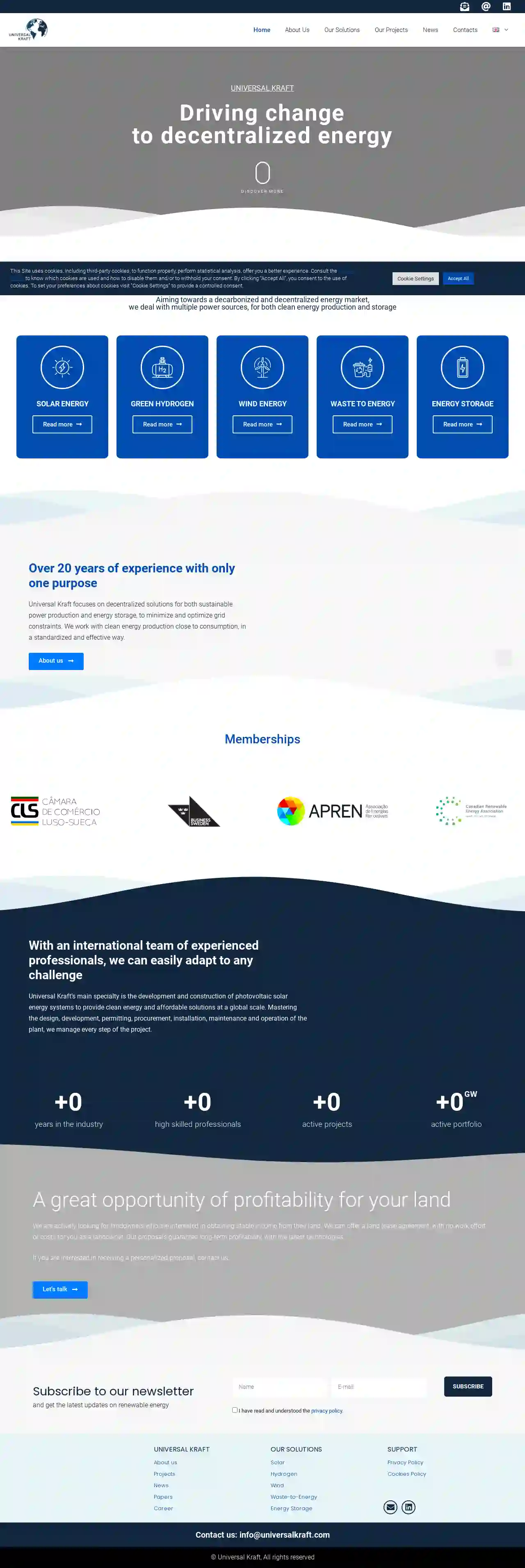Solar Installers Raynes Park
Find Solar Company in Raynes Park
Get multiple Solar Panel Installation Near Me quotes for your project today! Compare profiles, reviews, accreditations, portfolio, etc... and choose the best service.

Solarcrest
55 reviews38-42 Brunswick Hill, Macclesfield, SK10 1ET, GBSolarcrest is a company specializing in Mechanical Ventilation with Heat Recovery (MVHR) systems for new builds, refurbishments, and deep retrofit projects. They aim to provide the best possible MVHR outcome in terms of air quality, reliability, automation, and acoustics. Their services include a 3D design that perfectly fits your property, a 5-star rated managed installation, manufacturer-approved setup, handover, and ongoing aftercare. Solarcrest emphasizes the importance of designing and installing MVHR systems correctly to ensure optimal performance and longevity. They believe that MVHR is essential for modern, low-energy buildings, offering numerous health and comfort benefits in addition to energy savings. The company encourages potential clients to research the benefits of MVHR thoroughly before making a decision. Solarcrest also helps clients seal their buildings safely to ensure optimal energy efficiency.
- Services
- Why Us?
- Our Team
- Gallery
Get Quote
Universal Solar
London, GBUniversal Kraft focuses on decentralized solutions for both sustainable power production and energy storage, to minimize and optimize grid constraints. We work with clean energy production close to consumption, in a standardized and effective way. With an international team of experienced professionals, we can easily adapt to any challenge. Universal Kraft's main specialty is the development and construction of photovoltaic solar energy systems to provide clean energy and affordable solutions at a global scale. Mastering the design, development, permitting, procurement, installation, maintenance and operation of the plant, we manage every step of the project.
- Services
- Why Us?
- Gallery
Get Quote
Glo Renewables
529 reviewsTotnes, Devon, Unit 1, The Old Bakery, TQ9 5LW, GBGlo Renewables is a solar panel and renewable energy solutions provider based in Devon, UK. They offer a range of services including domestic and commercial solar panels, car and EV charging, solar hot water, batteries, and electrical services. The company is committed to helping customers reduce their carbon footprint and save money on energy bills. With a team of experienced professionals, Glo Renewables provides expert advice and installation services to ensure a smooth and stress-free experience for their clients.
- Services
- Why Us?
- Accreditations
- Our Team
- Testimonials
- Gallery
Get Quote
Go Green Renewables Ltd
20-22 Wenlock Road, London, N1 7GU, GBGo Green Home is a company dedicated to providing sustainable energy solutions for homes. We believe in empowering individuals to become more energy independent and reduce their reliance on fossil fuels. Our team of experts offers a range of products and services, including battery storage, PV panels and inverters, thermal hot water systems, and loft and wall insulation. We are committed to delivering high-quality, reliable solutions that meet the unique needs of each customer. We strive to make a positive impact on the environment and create a brighter future for generations to come.
- Services
- Why Us?
- Gallery
Get Quote
Allume Energy UK
54 reviews26 Store St, London, WC1E 7BT, GB- Services
- Why Us?
- Accreditations
- Our Team
- Testimonials
- Gallery
Get Quote
Eminent Energy
Poseodonos 1, Ledra Business Centre, Egkomi, Nicosia, 2406, GBEminent is a privately controlled mid-stream oil company based in Cyprus. It was established to develop an energy trading business as well as investments into energy assets. By combining trading activities and tangible assets Eminent is ideally placed to pursue opportunities in the ever-changing energy and power markets. Derivative trading always played a big role in our business since it provided hedging and risk management opportunities. Gradually our paper trading desk developed into profit generation business, and today our paper trading business became an important part of our long-term growth strategy. At Eminent, we see ourselves assisting the efficient energy transition. We are committed to provide more sustainable and cleaner energy solutions in our business. We are active on both mandatory and voluntary carbon markets as well as renewable investments. Eminent has a wide global coverage, originally focused on the CIS it has since expanded to other geographical locations over the last 15 years. Responsibility is an integral part of our business which defines how we work and operate. We recognize the risks associated with our operations and seek to ensure our business is always managed efficiently and safely. Eminent is a truly diverse company where our success is based on expertise and skills of our people.Our people is a core of Eminent’s business, and it is our people’s expertise, innovation, drive and relationships that we depend on the development of our business. Physical trading of crude oil and refined products with an average annual growth of 8%. 2010-2020
- Services
- Why Us?
- Gallery
Get Quote
Williams Renewables Ltd
21 reviewsLondon, GBWilliams Renewables is an MCS accredited, environmentally conscious renewable technology design and installation company. We are here to help you benefit from the advantages that renewable power and heating technologies have to offer. Discover the various benefits associated with solar PV including how it can reduce your operational and domestic expenses and future-proof your energy consumption.
- Services
- Why Us?
- Accreditations
- Gallery
Get Quote
Green Revolution Nationwide Ltd
55 reviewsUnit 2 Mere Farm Business Complex Redhouse Lane Hannington Northampton, Northampton, NN6 9FP, GBGREEN REVOLUTION is a company dedicated to providing sustainable energy solutions. Founded by Jonathan and Eli, who recognized a gap in the market for reliable and efficient renewable energy installations, GREEN REVOLUTION strives to exceed customer expectations. With a team of 10 full-time staff, including a fully qualified electrician, they offer a range of services including air source heat pumps, solar panels, and battery storage. Jonathan brings over 30 years of experience in project management within the construction industry, ensuring projects are delivered on time and within budget. GREEN REVOLUTION is committed to providing honest and accurate advice, high-quality workmanship, and a commitment to environmental responsibility.
- Services
- Why Us?
- Accreditations
- Our Team
- Gallery
Get Quote
Building Sustainability
London, GBFuture home of something quite cool. If you're the site owner, log in to launch this site. If you are a visitor, check back soon.
- Services
- Why Us?
- Gallery
Get Quote
Homebase - London Haringey
3.8Arena Shopping Park, Green Lanes, London, N4 1DT, GBHomebase is a leading home and garden retailer with over 140 stores across the UK and Ireland. We offer a wide range of products and services to help customers create their perfect home. Our stores are open 7 days a week, and we offer a variety of services including click and collect, home delivery, and in-store services such as kitchen design consultations and paint matching.
- Services
- Why Us?
- Gallery
Get Quote
Over 3,485+ Solar Installers on our platform
Our solar contractors operate in Raynes Park and beyond!
SolarCompaniesHub has curated and vetted Top Solar Installers arround Raynes Park. Find a reliable pro today.
Frequently Asked Questions About Solar Installers
- Tax Credits: Reduce your income tax liability based on the cost of your solar system.
- Rebates: Direct cash payments or discounts on the purchase of a solar energy system.
- Net Metering: Allows you to sell excess solar electricity back to the grid for credits.
- Renewable Energy Certificates (RECs): Tradeable credits representing the environmental attributes of your solar energy generation.
Do I need to replace my roof before installing solar panels?
What happens if my roof needs to be replaced after I install solar panels?
Do solar panels increase my home value?
Are there any financial incentives for going solar?
Do I need to replace my roof before installing solar panels?
What happens if my roof needs to be replaced after I install solar panels?
Do solar panels increase my home value?
Are there any financial incentives for going solar?
- Tax Credits: Reduce your income tax liability based on the cost of your solar system.
- Rebates: Direct cash payments or discounts on the purchase of a solar energy system.
- Net Metering: Allows you to sell excess solar electricity back to the grid for credits.
- Renewable Energy Certificates (RECs): Tradeable credits representing the environmental attributes of your solar energy generation.